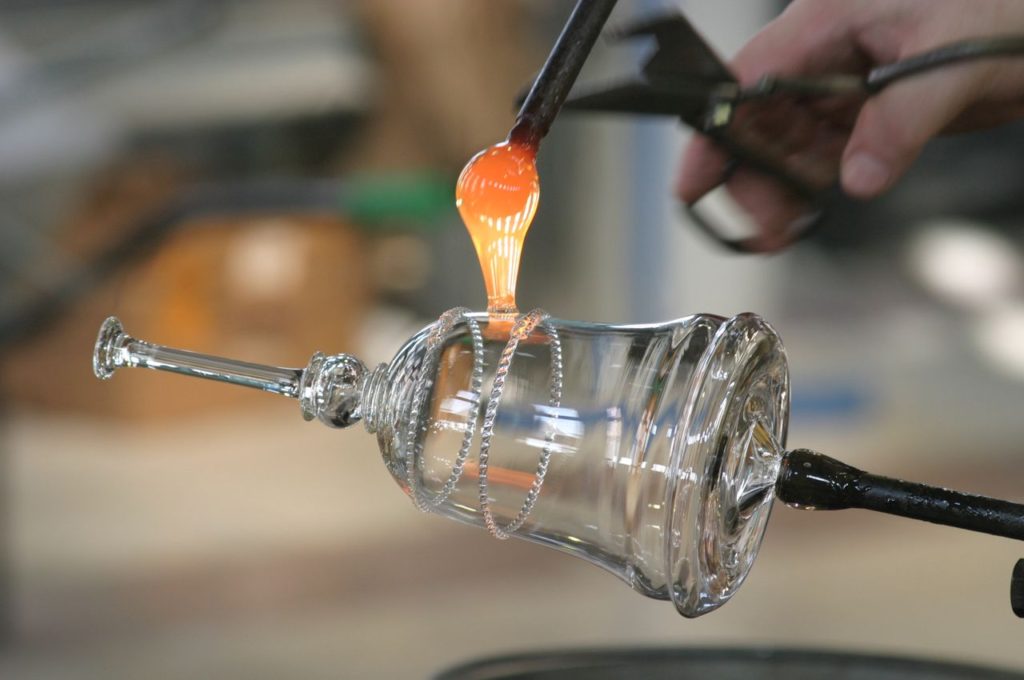The Ceska Lipa region is known for its traditional glass production. Kamenicky Senov and Novy Bor are particularly involved in the production of glass. The history of glass production can be learned in local glass museums – Kamenicky Senov covers the history of glassmaking and glass art from past to present, whereas the museum in Novy Bor is dedicated to stylish and technological development of Czech glass from the 17th century to the sixties of the 20th century. Family glassworks where visitors can have a go at making their own glass are also located in this region.
Glassmaking is an old industry known since ancient times. The formation of this from of art is being debated; some sources point to the Chinese, the Phoenicians, the Indians, or the Jews as his discoverers. Most likely, glass has been discovered in many places at the same time. The glasses of those times were far from today’s form and were either colored or black. In Oxford, the museum has glass of the first Egyptian dynasty (3300 BC). The amulet of Pharaoh Antep IV is stored in the British Museum. (2100 BC). During the period of great prosperity in the production of glass is considered the Middle Ages. The Venetian mirrors of the island of Murano are still well-known. The first known glass factory is considered to be the French factory, which began in 1688 with the production of cast flat mirror glass.
The first beginnings of the Czech glass date back to the 11th century AD. The great boom of Czech glassmaking occurred in the 17th century, under Emperor Rudolf II. At that time Bohemia became the center of glass artists. One of the big glass areas was the Bohemian-Moravian Highlands and Jihlava. The glassworks were mainly formed in the vicinity of the deep beech forests, since the beechwood had been the only melting pot in the melting furnaces. Later the glassworks were built around the coal basins. Beech wood did not only serve as a fuel (it also produced gas), but also made molds into which glass was blown. In the 18th century, the production of cut or crystal glass developed in the Czech lands. In the 18th century, Czech glass became a world glass in its pure color and shine, which successfully competed with Venetian glass. Production of sheet glass and production of fake gems and pearls also flourished.
For more information about the Liberec Region where this place is located click here.

NOTE: Many features on this website require JavaScript. You can enable JavaScript via your browser's preference settings.